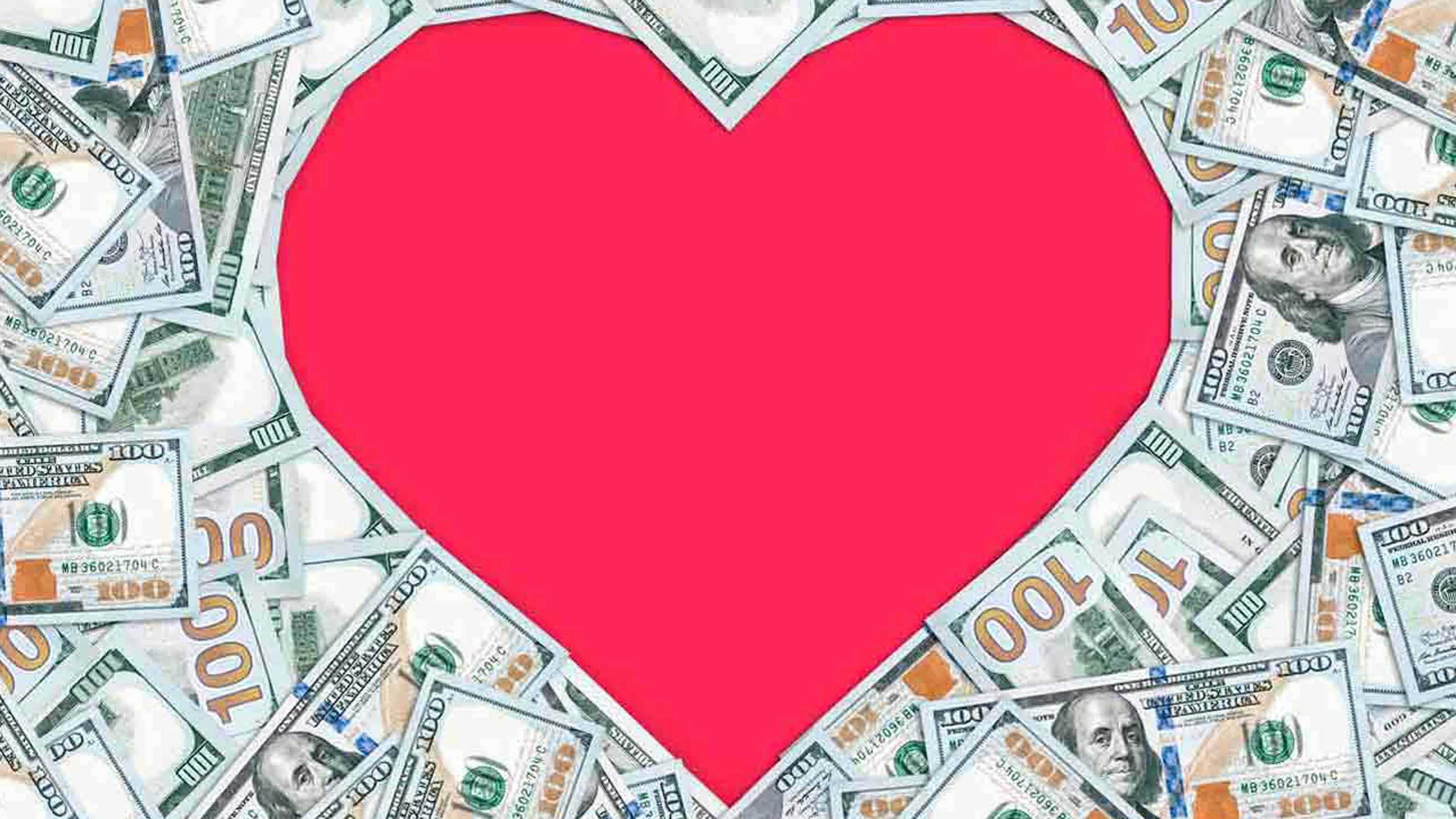Tax-Savvy Charitable Giving With QCDs Can Benefit Both Giver and Receiver
A qualified charitable distribution, or QCD, might be the answer for you – but watch those rules.


Plenty of retirees like to give back to their communities through charitable donations, but questions often arise over the best way to do that.
What approach is efficient, provides the tax benefits you’re after, and also is advantageous for the charity that’s on the receiving end?
One possibility is a qualified charitable distribution (QCD), a tax-savvy way to reduce your taxable income and maximize your donations whether you itemize deductions on your tax return or not. An added bonus is that the benefits can be large for both the donor and the charity.
From just $107.88 $24.99 for Kiplinger Personal Finance
Become a smarter, better informed investor. Subscribe from just $107.88 $24.99, plus get up to 4 Special Issues

Sign up for Kiplinger’s Free Newsletters
Profit and prosper with the best of expert advice on investing, taxes, retirement, personal finance and more - straight to your e-mail.
Profit and prosper with the best of expert advice - straight to your e-mail.
Here’s how QCDs work
A QCD is a distribution from an IRA that is paid directly from that retirement account to a qualified charity. QCDs lower your adjusted gross income (AGI) and therefore lower your tax bill. They can also offset required minimum distributions (RMDs), those withdrawals you must take from your IRA each year once you reach age 72. An RMD adds to your income, raising the amount of taxes you pay, but a QCD is excluded from your income. So, for example, if you withdrew $50,000 from your IRA as an RMD, you would pay taxes on that money. But if that same $50,000 was used as a QCD instead, you avoid the taxes while helping a charity at the same time.
Taxpayers can benefit from QCDs even when they take the standard deduction and do not itemize their deductions. Meanwhile, even though a QCD doesn’t count as an itemized deduction, taxpayers who itemize still benefit because an exclusion is better than an itemized deduction because it lowers their AGI. AGI is an important number on your tax return because many tax benefits, deductions, credits and other additional taxes or charges are based on AGI. With a lower AGI, income tax on Social Security benefits may be reduced and Medicare surcharges may be lowered. There may be other benefits as well.
Some rules to follow
There are important rules that govern how QCDs work, including:
- The charity you give to must be a 501(c)(3) organization that is eligible to receive tax-deductible contributions. Donor-advised funds, supporting organizations (that is, organizations that give to other public charities), and private foundations are not qualifying charities.
- The donor may not receive any benefit for making the distribution to the charity. As examples, the donor may not receive tickets to a charity event, purchase raffle tickets, or buy something in a charity auction.
- There is an age requirement involved. The donor must be older than 70½ and may make QCDs before RMDs are required, which happens beginning at age 72.
- The maximum annual QCD is $100,000 per person, not per IRA. A husband and wife can each make up to a $100,000 QCD only if the money comes out of their own IRA.
- The QCD must be a direct transfer from the IRA to the charity. Preferably, the IRA administrator would cut the check. It is not permissible for the IRA administrator to pay the IRA owner and for the owner to then write a personal check to the charity.
- QCDs are available from IRAs and inherited IRAs. QCDs also can be made from SEP IRAs and SIMPLE IRAs, but only if those IRAs are inactive, meaning that the SEP or SIMPLE IRA owner is no longer making contributions to these accounts. Additionally, only pre-tax IRA funds qualify. As a result, most Roth IRA funds won’t qualify because your contributions to them were not pre-tax. QCDs also cannot be made from employer plans, such as a 401(k).
- Taxpayers should notify their tax preparer that they made a QCD because the 1099 issued by the custodian does not specify a QCD; it only shows that a distribution was made from the IRA. If the QCD is not referred to on the tax return, the taxpayer loses the tax break.
- A required minimum distribution can be offset by a QCD (up to $100,000). However, the timing of a QCD is important in this case. The first dollars withdrawn from an IRA each year are counted toward the RMD. You cannot retroactively claim that money already distributed from an IRA was actually QCD funds. Said another way, once an RMD is taken, that income cannot be offset with a future QCD. It is therefore generally recommended that QCDs be done early in the year, particularly if IRA distributions are made monthly or quarterly.
What the tax savings could look like
A qualified charitable distribution can be a powerful tax-savvy tool for those who qualify and who make sure they keep to the rules.
As you can see, though, making sure everything is done right can get complicated, so it’s best to find a financial professional who can assist you in working through these rules and getting everything right.
Example of Potential QCD Savings

Ronnie Blair contributed to this article.
The appearances in Kiplinger were obtained through a PR program. The columnist received assistance from a public relations firm in preparing this piece for submission to Kiplinger.com. Kiplinger was not compensated in any way.
Securities and advisory services offered through Sunbelt Securities, Inc. Member FINRA / SIPC. Fixed Life Insurance and Annuities offered through Charles W. Rawl & Associates, LLC. Charles W. Rawl & Associates, LLC and Sunbelt Securities, Inc. are unaffiliated companies and neither provides tax or legal advice.
Related Content
- When RMDs Loom Large, QCDs Offer a Gratifying Tax Break
- How to Report QCDs on Your Tax Return: The Tax Letter
- Six Charitable Giving Strategies: Feel Good and Cut Your Taxes
- What to Do When You Have More Retirement Income Than You Need
Profit and prosper with the best of Kiplinger's advice on investing, taxes, retirement, personal finance and much more. Delivered daily. Enter your email in the box and click Sign Me Up.

As president of Charles W. Rawl & Associates, LLC, Charlie Rawl has distinguished himself as a troubleshooter by implementing creative solutions to complex financial problems. He has passed the Series 6, 7, 31, 63 and 65 securities exams and holds life insurance licenses in more than a dozen states.
-
 Holiday Tax Scams: 'Tis the Season to be Wary
Holiday Tax Scams: 'Tis the Season to be WaryTax Scams Navigating tax tricks of the holiday season may be daunting, but don't let that destroy your festive spirit
-
 Metro by T-Mobile Is Giving Away This Samsung Galaxy A16: Which Plans Are Eligible?
Metro by T-Mobile Is Giving Away This Samsung Galaxy A16: Which Plans Are Eligible?Metro by T-Mobile is offering free Samsung Galaxy A16 phones on eligible plans right now. Here’s how the deal works.
-
 I Drive and Collect Classic Cars: Here’s How I Got Started
I Drive and Collect Classic Cars: Here’s How I Got StartedAre classic cars a hobby or an investment strategy — or both? Either way, the vintage car scene is much cooler and more affordable than you think.
-
 The $183,000 RMD Shock: Why Roth Conversions in Your 70s Can Be Risky
The $183,000 RMD Shock: Why Roth Conversions in Your 70s Can Be RiskyConverting retirement funds to a Roth is a smart strategy for many, but the older you are, the less time you have to recover the tax bite from the conversion.
-
 A Financial Pro Breaks Retirement Planning Into 5 Manageable Pieces
A Financial Pro Breaks Retirement Planning Into 5 Manageable PiecesThis retirement plan focuses on five key areas — income generation, tax management, asset withdrawals, planning for big expenses and health care, and legacy.
-
 4 Financial To-Dos to Finish 2025 Strong and Start 2026 on Solid Ground
4 Financial To-Dos to Finish 2025 Strong and Start 2026 on Solid GroundDon't overlook these important year-end check-ins. Missed opportunities and avoidable mistakes could end up costing you if you're not paying attention.
-
 Are You Putting Yourself Last? The Cost Could Be Your Retirement Security
Are You Putting Yourself Last? The Cost Could Be Your Retirement SecurityIf you're part of the sandwich generation, it's critical that you don't let the needs of your aging parents come at the expense of your future.
-
 I'm an Insurance Pro: It's Time to Prepare for Natural Disasters Like They Could Happen to You
I'm an Insurance Pro: It's Time to Prepare for Natural Disasters Like They Could Happen to YouYou can no longer have the mindset that "that won't happen here." Because it absolutely could. As we head into 2026, consider making a disaster plan.
-
 The Future of Philanthropy Is Female: How Women Will Lead a New Era in Charitable Giving
The Future of Philanthropy Is Female: How Women Will Lead a New Era in Charitable GivingWomen will soon be in charge of trillions in charitable capital, through divorce, inheritance and their own investments. Here's how to use your share for good.
-
 5 Smart Things to Do With Your Year-End Bonus, From a Financial Professional
5 Smart Things to Do With Your Year-End Bonus, From a Financial ProfessionalAfter you indulge your urge to splurge on a treat, consider doing adult things with the extra cash, like paying down debt, but also setting up a "fun fund."
-
 Are You a Gen X Investor? Here's How You Can Protect Your Portfolio From an AI Bubble
Are You a Gen X Investor? Here's How You Can Protect Your Portfolio From an AI BubbleAmid talk of an AI bubble, what's the best course of action for investors in their 50s and 60s, whose retirement savings are at risk from major market declines?